
Perennial Forbs Around Las Vegas, Vegetation Around Las Vegas
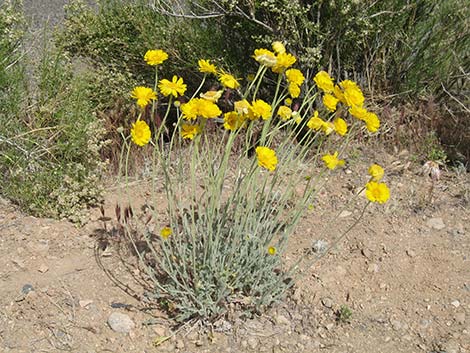 Typical Desert Marigold: leaves at base and long, naked flower stalks |
General: Desert Marigold (Baileya multiradiata) is a perennial forb with relatively large, showy, bright yellow daisy (composite) flowers that can turn the landscape yellow during a good year, but can bloom at any time of year when conditions permit. The ray flowers are numerous (at least 15), the involucre is wide (7–25 mm diameter), and there is one flowerhead per peduncle (flower stalk). Therefore not Laxflower (Baileya pauciradiata), which has several flowerheads per stem. Furthermore, most of the leaves are near the ground, the ray flowers are long (more than 10 mm), oblong, and clearly 3-lobed. The peduncles are long (at least 10 cm) and leafless. In flower, the definitive identifier is style tips blunt. Therefore not Woolly Desert Marigold, which has leaves on the flower stalks. Desert Marigolds have spring and fall growth habits. In spring, the plants grow with leaves at the base and long, naked flower stalks, making them easy to identify. However, during fall, Desert Marigolds put more leaves higher on the flower stalks, causing some confusion when comparing them with Woolly Desert Marigold. |
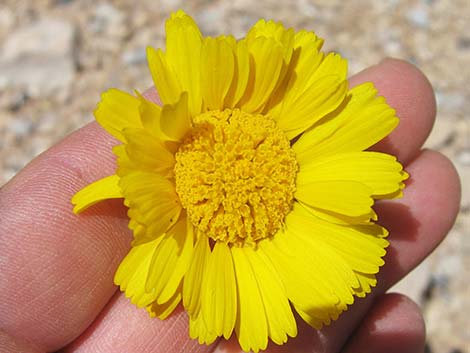 |
Desert Marigolds are a common component of spring and fall wildflower displays along washes and on bajadas in the Lower Sonoran (Creosote-Bursage Flats) and Upper Sonoran (Mojave Desert Scrub) life zones. Family: Sunflower (Asteraceae). Other Names: Plant Form: Perennial forb with basal leaves and upright flower stalks. Height: With flowers, to about 20 inches. Leafy parts usually to about 6 inches. Stems: None: leaves grow from the ground. Leaves: Mostly basal with a few small leaves on the flowering stems (but not on the peduncle). Basal leaves to about 5 inches long, deeply lobed (almost compound), white-hairy. Leaves on the stems are short (to about 1 inch) and narrow. |
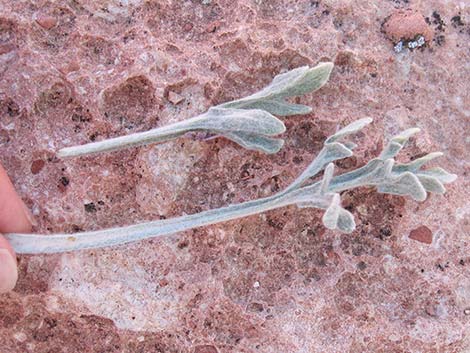 |
Flowers: Blooms late spring to early summer, then again at any time if conditions are right. Inflorescence: one flower (flowerhead) per peduncle (flower stalk). Flower: showy daisy-like (composite with disk and ray flowers), bright yellow to yellow-orange, to about 1-1/2 inches across. Ray flowers 15 or more. Involucre broad (7–25 mm diameter). Style tips blunt. Seeds: Habitat: Dry, well-drained sandy, gravelly, and rocky soils on upper bajadas and moderate slopes in the lower mountains. Elevation: About 2,000 to 5,000 feet Distribution: California to New Mexico, and south into northern Mexico. Comments: |
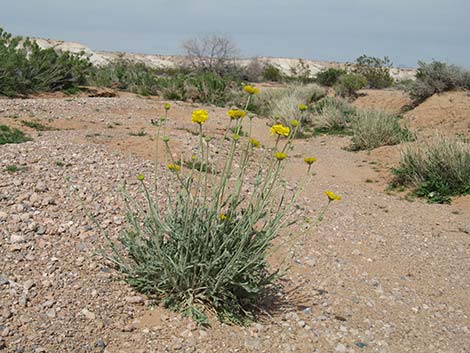 |
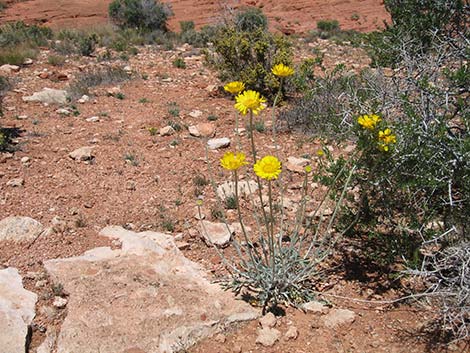 |
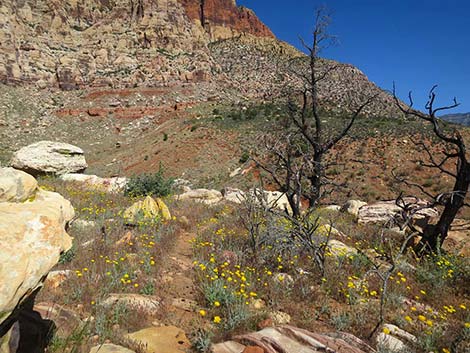 Desert Marigold can cover the landscape |
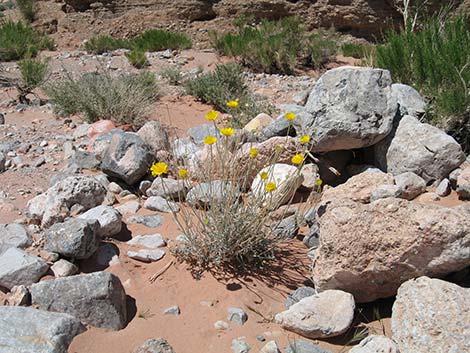 Desert Marigold |
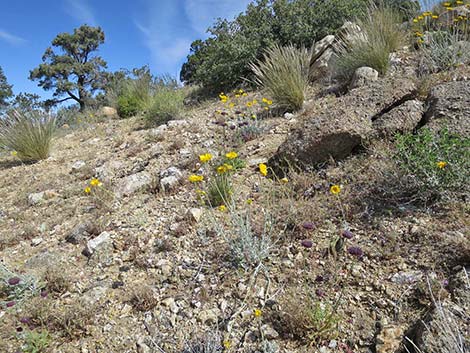 Desert Marigold blooming during spring |
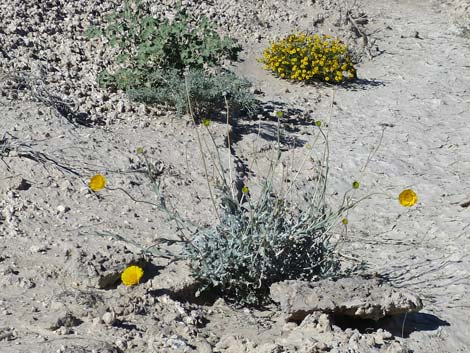 Desert Marigold blooming in November |
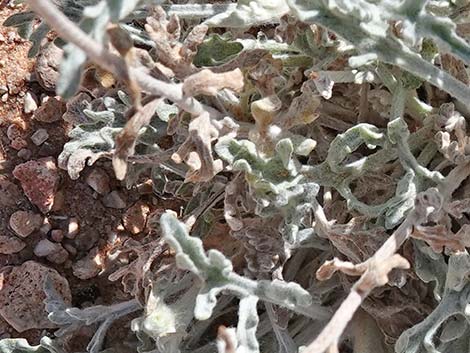 Leaves clustered near the ground |
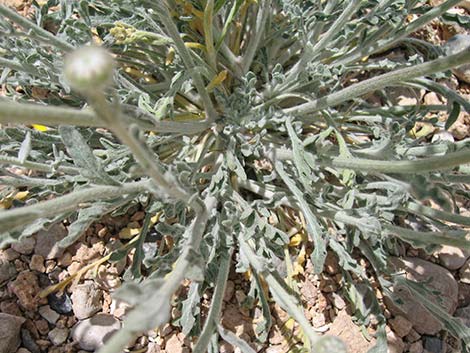 Leaves clustered near the ground |
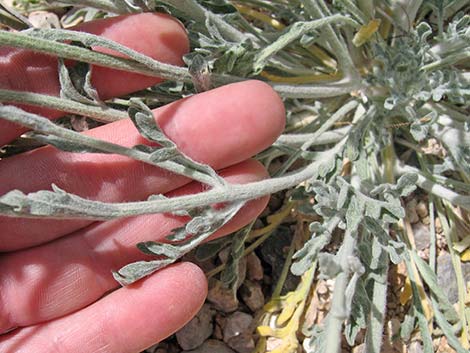 |
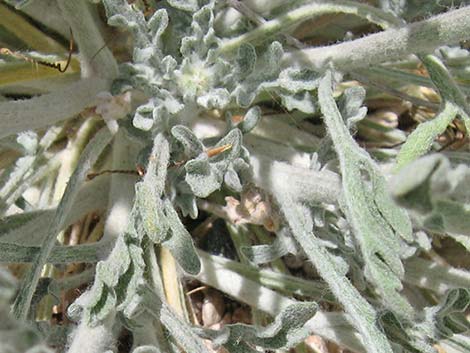 |
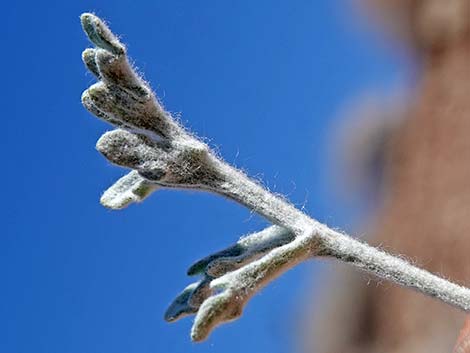 Leaves deeply lobed, somewhat woolly |
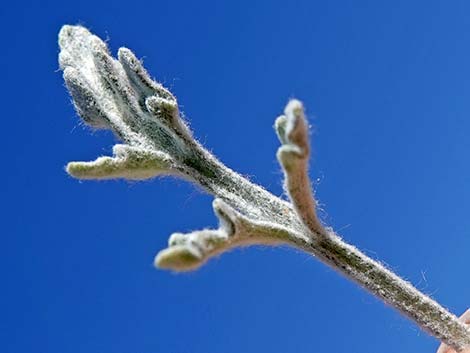 Leaves deeply lobed, somewhat woolly |
 Leaves grow only at the base of the flower stalk (peduncle) |
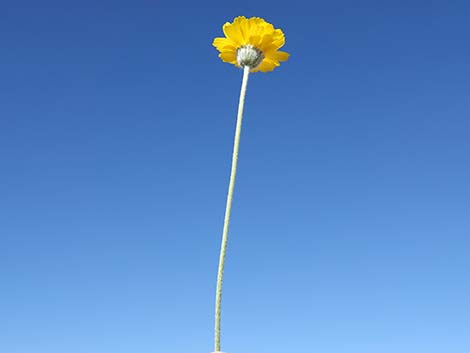 Flower stalks (peduncle) rarely have leaves |
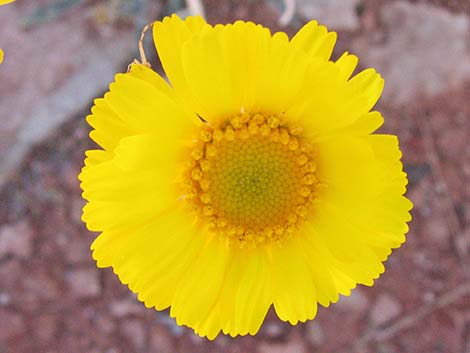 Ray flowers are numerous (at least 15) |
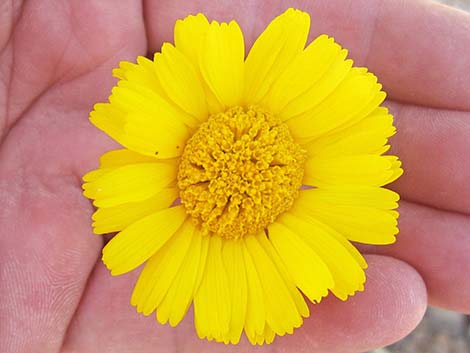 Ray flowers are long (more than 10 mm), oblong, and clearly 3-lobed |
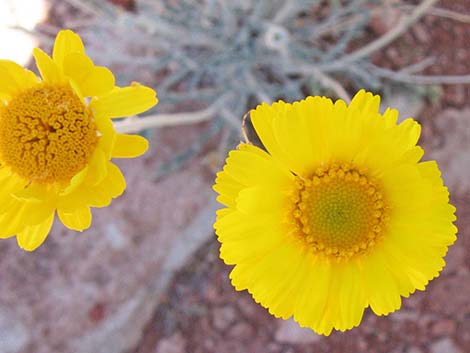 Ray flowers are numerous (at least 15) |
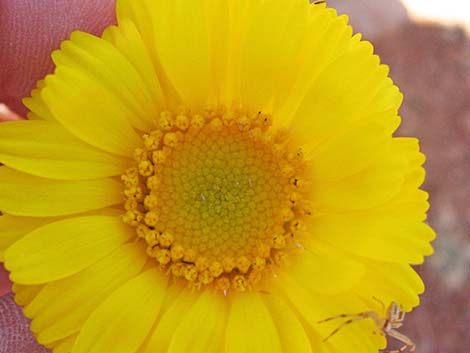 Ray flowers are long (more than 10 mm), oblong, and clearly 3-lobed |
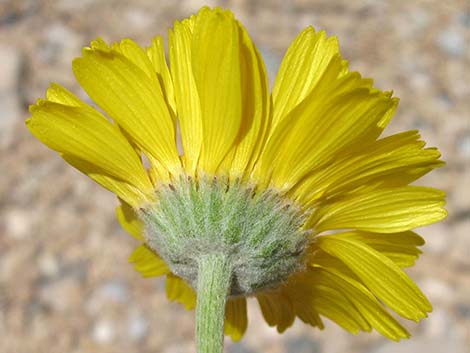 Involucre (collection of phyllaries) wide (7–25 mm diameter) |
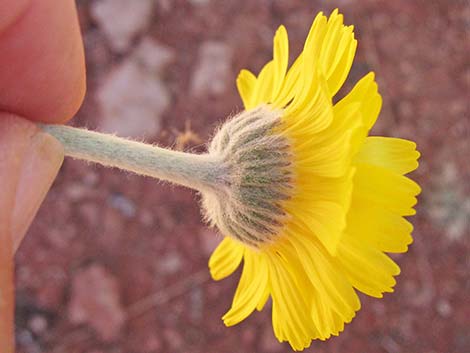 Involucre (collection of phyllaries) wide (7–25 mm diameter) |
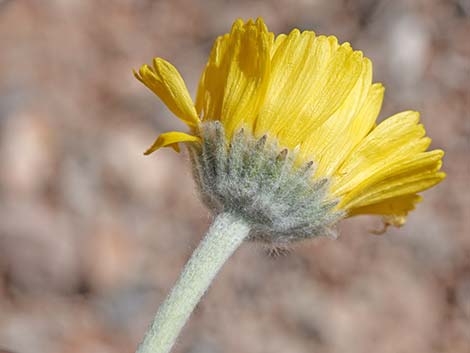 Phyllaries only somewhat woolly |
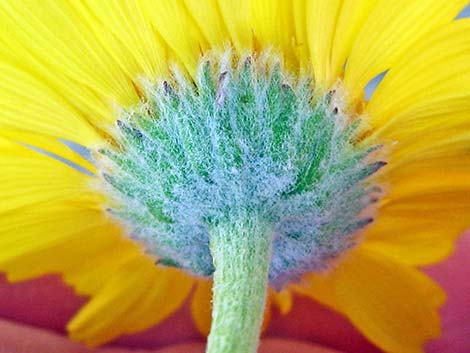 Phyllaries only somewhat woolly |
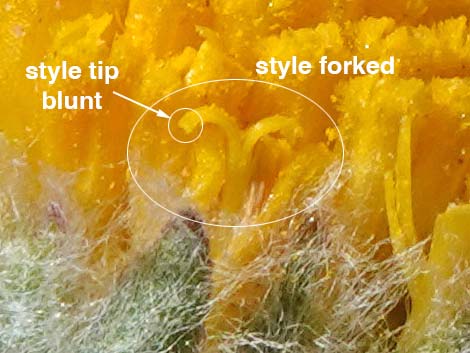 Style forked, tips blunt |
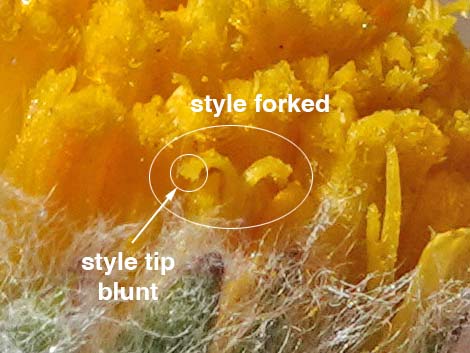 Style forked, tips blunt |
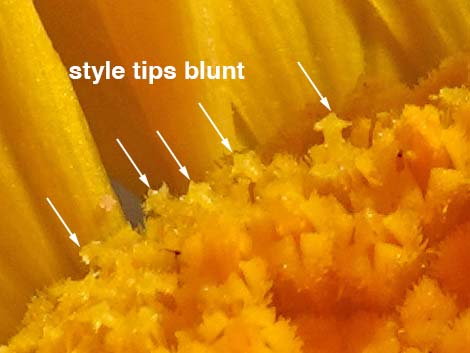 Style tips blunt |
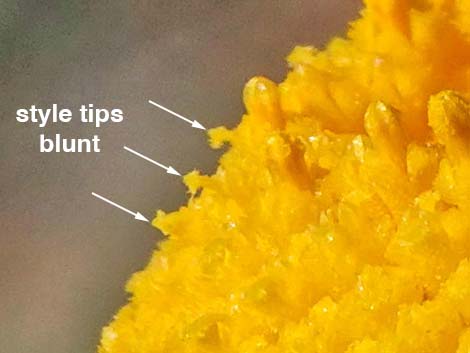 Style tips blunt |
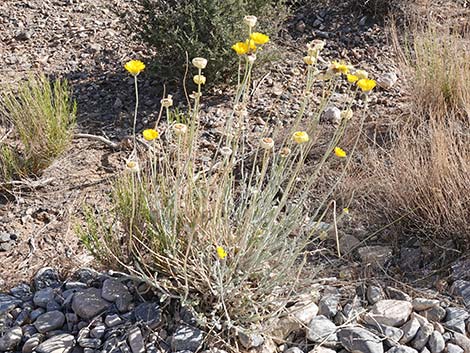 During summer, the plant continues to produce flowers |
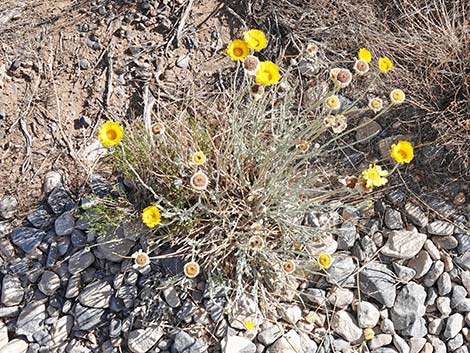 During summer, the plant continues to produce flowers |
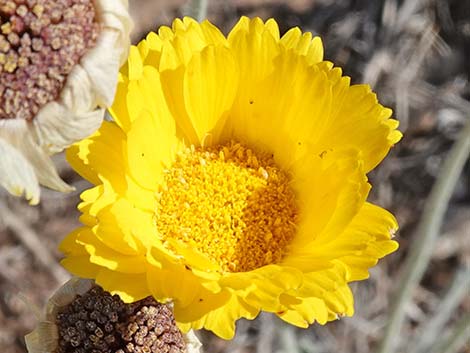 Fresh flower during summer |
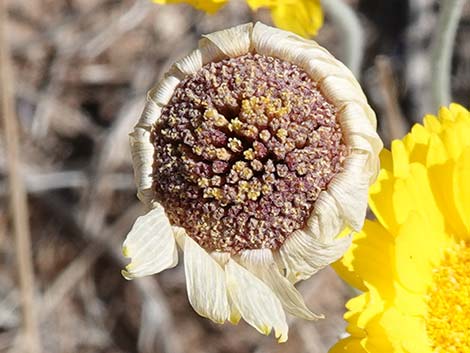 Spent flower during summer |
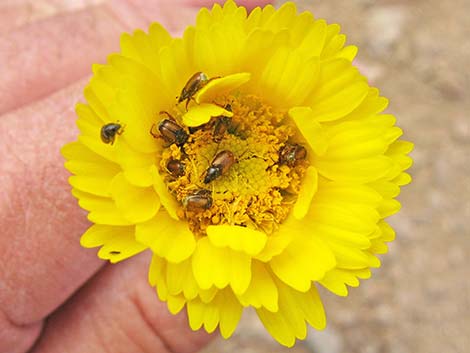 Beetle pollinators |
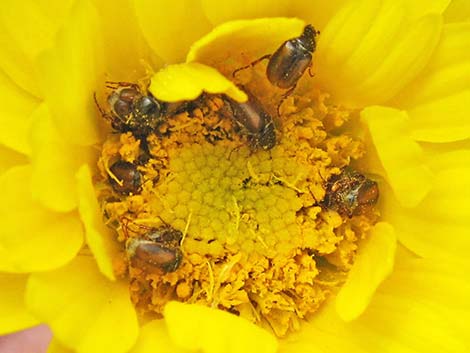 Beetle pollinators |
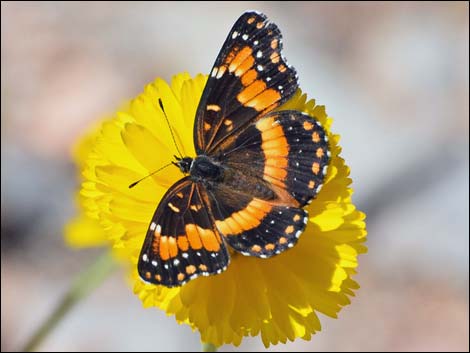 California Patch on Desert Marigold |
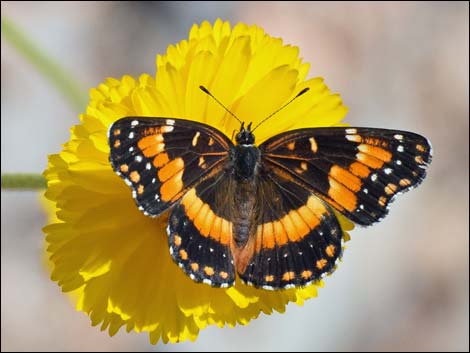 California Patch on Desert Marigold |
Note: All distances, elevations, and other facts are approximate. Names generally follow the USDA database.
![]() ; Last updated 240621
; Last updated 240621
| All Perennial Forbs | Plant Species Index | Glossary | Copyright, Conditions, Disclaimer | Home |